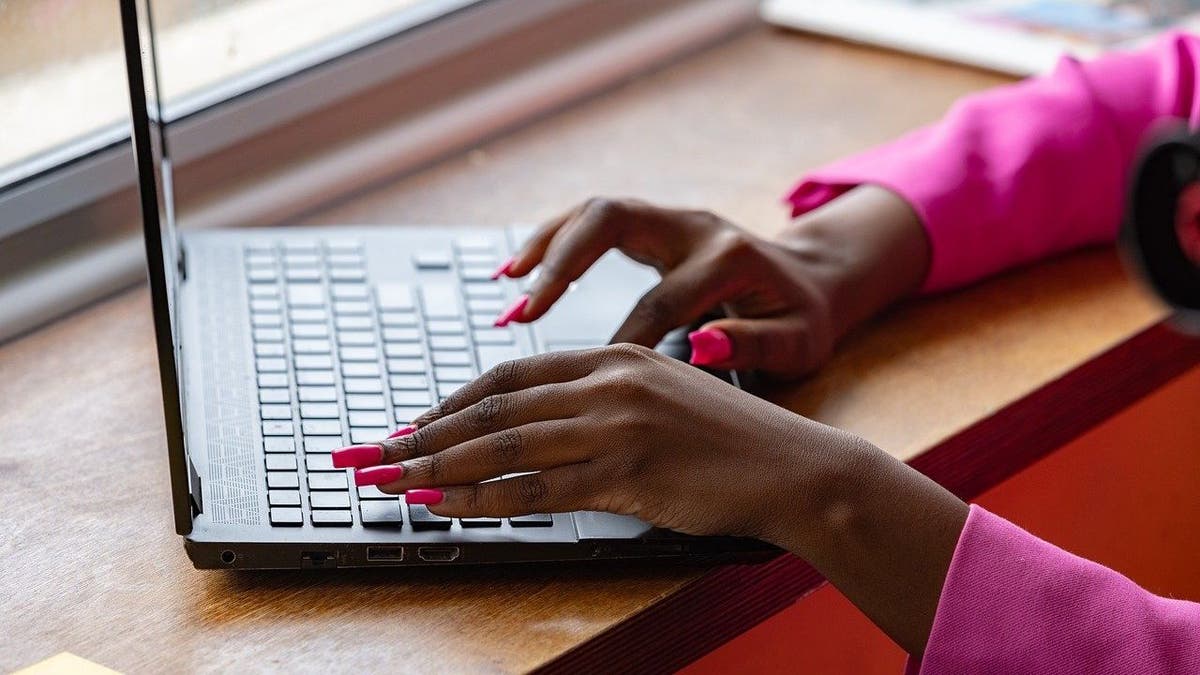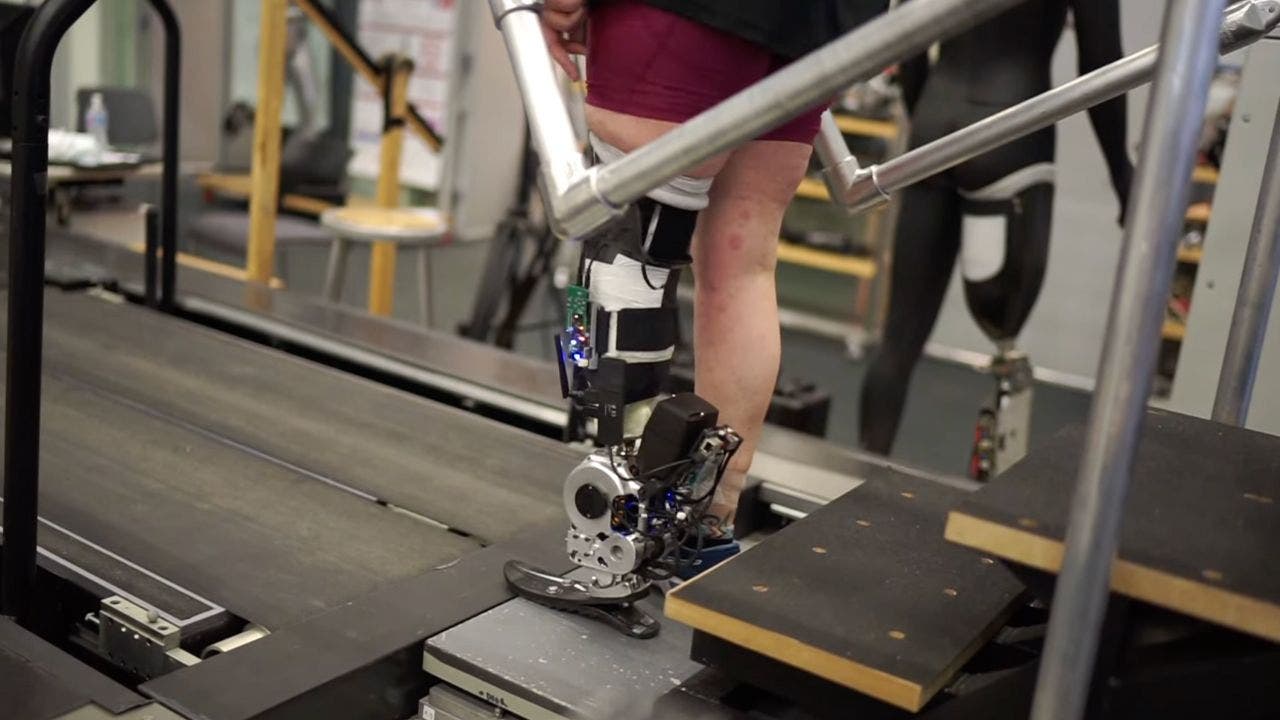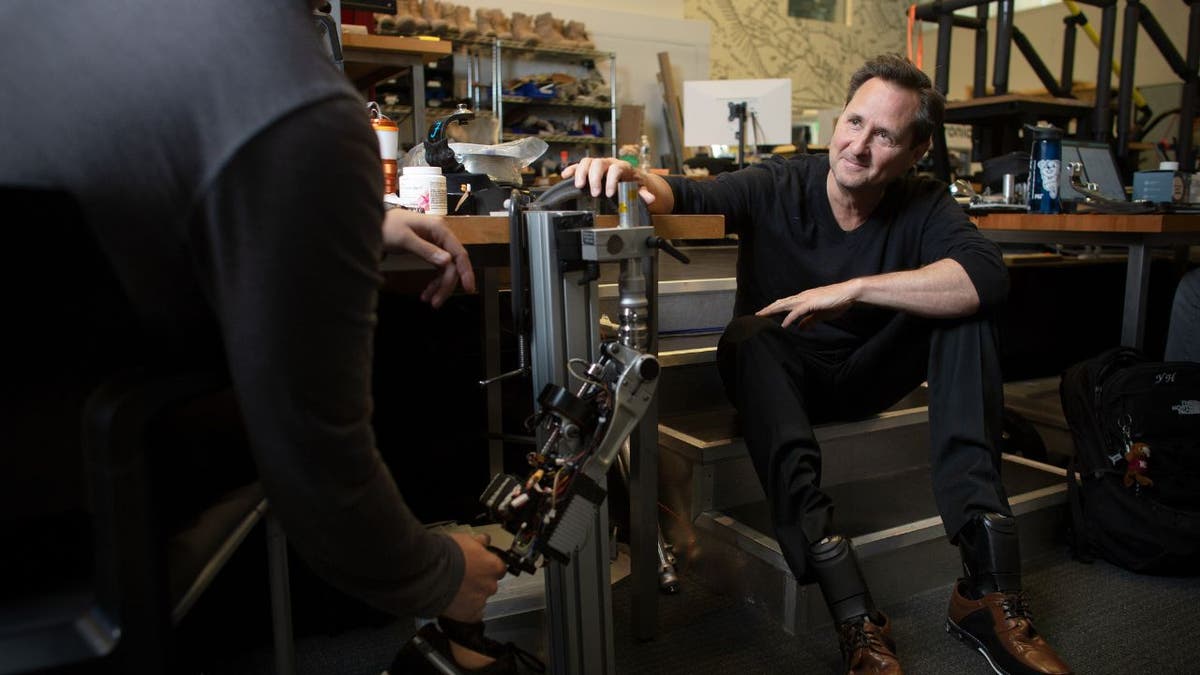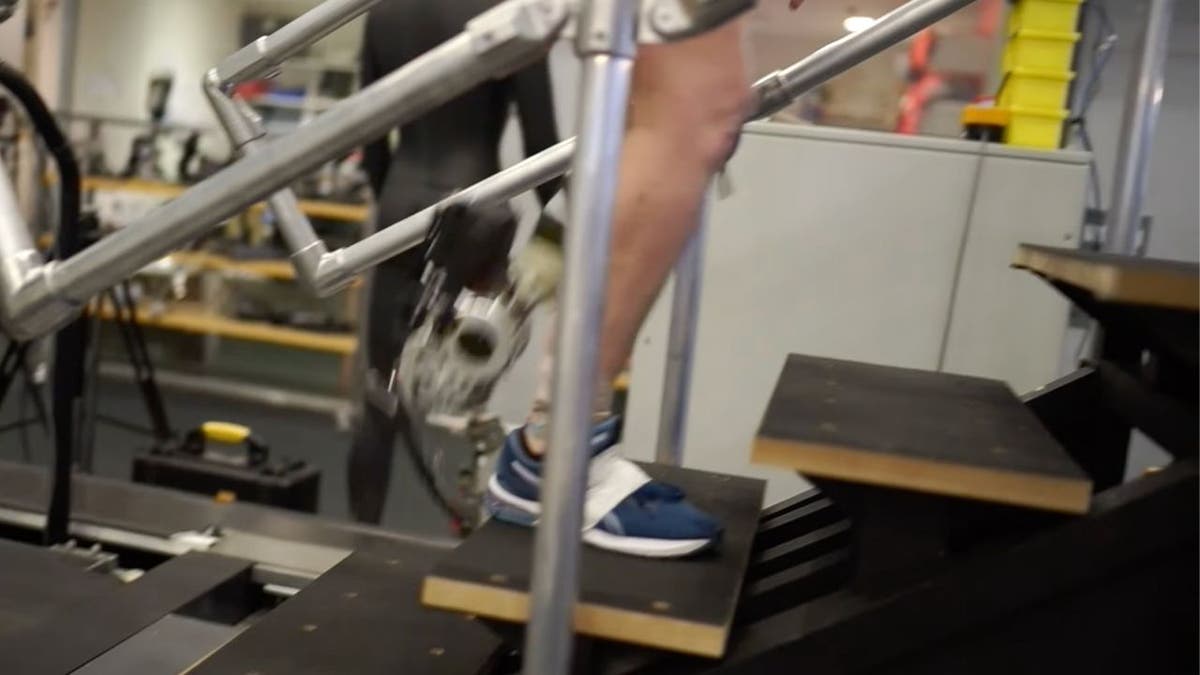Technology
How to prevent malware moving from an old computer to new one

What is malware?
Kurt “CyberGuy” Knutsson discusses how to protect yourself from malware and ransomware.
When it’s time to upgrade to a new computer, the excitement can be overshadowed by the concern of transferring existing data without bringing along any unwanted viruses or malware. Philip from Troy, Michigan, shares this concern and asks for the best way to ensure a clean transition.
“When buying a new computer, what is the best way to prevent transferring any viruses or malware from the old computer to the new computer?”
Transferring data from an old computer to a new one can be daunting, especially when you want to ensure a clean and secure transition. Fortunately, there are several effective methods to safeguard your data and prevent the spread of malicious software during the upgrade process.
GET SECURITY ALERTS, EXPERT TIPS – SIGN UP FOR KURT’S NEWSLETTER – THE CYBERGUY REPORT HERE
A woman who appears stressed looking at her laptop screen (Kurt “CyberGuy” Knutsson)
6 ways to safeguard data during a computer upgrade
1) Scan your files
Before transferring any data from your old computer to the new one, it’s crucial to perform a thorough scan of your files using a reputable antivirus program. This step is essential to identify and remove any potential viruses, malware, or other malicious software that may be present on your old system. Antivirus programs are designed to detect and eliminate various types of threats, including viruses, worms, trojans, spyware and adware.
By running a full system scan, you can ensure that your files are thoroughly checked for any known threats and that any detected malware can be quarantined or removed. It’s important to keep your antivirus software up to date, as new threats are constantly emerging, and outdated definitions may not be able to detect the latest malware variants. Most antivirus programs offer automatic updates to ensure that you have the latest virus definitions and protection features.

A man working on his laptop (Kurt “CyberGuy” Knutsson)
MAC AND MACBOOK HIT WITH ‘CUCKOO’ MALWARE STEALING SENSITIVE INFORMATION
2) Back up and scan again
After performing the initial scan and removing any detected threats, it’s recommended to create a backup of your important files and data on an external storage device, such as an external hard drive or a USB flash drive. This backup serves as a precautionary measure in case any issues arise during the transfer process or if additional threats are discovered later. Once you have created a backup, it’s advisable to perform another scan on the backed-up files.
This redundancy ensures that any potential threats that may have been missed during the initial scan are detected and removed before transferring the data to your new computer. By scanning your files twice, you significantly reduce the risk of inadvertently transferring any viruses or malware to your new system, providing an additional layer of protection for your data.

A woman on her laptop (Kurt “CyberGuy” Knutsson)
BEWARE OF ENCRYPTED PDFs AS LATEST TRICK TO DELIVER MALWARE TO YOU
3) Use Windows Backup or Time Machine
If you’re a Windows user, you can take advantage of the built-in Windows Backup feature to create a comprehensive backup of your files, folders, settings, and preferences. This backup can be stored on an external hard drive or a network location, making it easier to restore your data and settings on the new computer.
For Mac users, the Time Machine feature serves a similar purpose. Time Machine automatically creates backups of your files, applications, and system settings, allowing you to restore your data to a previous state or transfer it to a new Mac. Using these built-in backup solutions can simplify the process of transferring your data and settings to a new computer while also providing an additional layer of protection against potential data loss or corruption.

A woman working on her laptop (Kurt “CyberGuy” Knutsson)
HOW HACKERS ARE EXPLOITING WINDOWS SMARTSCREEN VULNERABILITY TO SPREAD MALWARE
4) Avoid booting the infected system
If you suspect that your old computer may be infected with malware, it’s crucial to avoid booting from the old system’s operating system during the transfer process. Booting from an infected system can potentially spread the malware to any connected devices or storage media, including your new computer. Instead, consider using a clean, bootable USB thumb drive or a live operating system environment, such as a Linux live CD or USB, to access and transfer your data.
These bootable media are designed to run independently from your computer’s hard drive, providing a safe and isolated environment for data transfer. By avoiding booting from the potentially infected system, you can significantly reduce the risk of transferring any malware or viruses to your new computer during the data migration process.

A woman working on her laptop (Kurt “CyberGuy” Knutsson)
BEST LAPTOPS FOR 2024
5) Protect sensitive data with encryption
While encryption alone does not prevent malware transfer, it can add an extra layer of security for your sensitive information during the data migration process. Consider encrypting files containing confidential or personal data, such as financial documents, personal records, or business-critical information.
- Windows Users: You can enable BitLocker Drive Encryption or use third-party encryption tools. BitLocker is accessible under Settings > About in Windows.
- Mac Users: Utilize FileVault, Apple’s built-in encryption feature for macOS.
Encryption converts your data into a coded format that can only be accessed with a specific key or password, making it unreadable to unauthorized parties. This measure helps protect your sensitive information from potential data breaches or unauthorized access, even if your files are accidentally transferred with any malware.
However, it’s important to note that encryption alone does not prevent malware from being transferred along with the encrypted files. Malware can infect encrypted files, and when those files are decrypted on the new computer, the malware can spread. Therefore, encryption should be used in conjunction with other security measures, such as thorough scanning, cleaning and safe file transfer methods, to minimize the risk of malware transfer during the computer upgrade process.

A woman on her laptop (Kurt “CyberGuy” Knutsson)
BEST DESKTOP COMPUTERS FOR 2024
6) Update your antivirus software
Keeping your antivirus software up-to-date is crucial for maintaining effective protection against the latest threats. Antivirus companies regularly release updates that include new virus definitions, improved scanning engines, and enhanced security features to combat emerging malware and cyberthreats.
Before transferring your data to the new computer, ensure that your antivirus software is fully updated on both the old and new systems. This step ensures that you have the most recent protection against known threats, reducing the risk of transferring any undetected malware during the migration process.
Additionally, it’s recommended to schedule regular updates and scans on your new computer to maintain ongoing protection against potential threats. Many antivirus programs offer automatic updates and scanning features, making it easier to keep your system secure without manual intervention. Get my picks for the best 2024 antivirus protection winners for your Windows, Mac, Android & iOS devices.
By following these steps, you can significantly reduce the risk of transferring viruses or malware from your old computer to your new system, ensuring a smooth and secure transition for your data and files.

A woman working on her laptop (Kurt “CyberGuy” Knutsson)
KURT’S BEST FATHER’S DAY GIFT GUIDE 2024
Kurt’s key takeaways
Transferring data to a new computer doesn’t have to be a risky endeavor. By following these steps, you can significantly reduce the chances of carrying over any viruses or malware. It’s important to remember that while no method is entirely foolproof, diligence and the use of reliable antivirus software can provide substantial protection. If at any point the process seems overwhelming, don’t hesitate to seek assistance from a professional. With these precautions in place, you can enjoy your new computer with peace of mind, knowing that your data is as secure as possible.
Have you ever dealt with data loss or corruption during a computer transition? What lessons did you learn from that experience? Let us know by writing us at Cyberguy.com/Contact.
For more of my tech tips and security alerts, subscribe to my free CyberGuy Report Newsletter by heading to Cyberguy.com/Newsletter.
Ask Kurt a question or let us know what stories you’d like us to cover.
Follow Kurt on his social channels:
Answers to the most asked CyberGuy questions:
Copyright 2024 CyberGuy.com. All rights reserved.

Technology
Junji Ito’s terrifying Uzumaki hits Adult Swim in September
/cdn.vox-cdn.com/uploads/chorus_asset/file/25547597/Screen_Shot_2024_07_26_at_3.55.30_PM.png)
Adult Swim’s long-awaited adaptation of Uzumaki finally has a premiere date — and an appropriately creepy trailer. The series, based on the classic horror manga from Junji Ito, will start airing on September 28th. Episodes will hit Adult Swim first, and then stream on Max the following day.
Uzumaki follows a cursed town that is — and I promise it’s scarier than it sounds — plagued by spirals. Here’s the full synopsis:
“Let’s leave this town together,” asks Shuichi Saito, a former classmate of Kirie Goshima, a high school girl who was born and grew up in Kurouzu-cho. Everything from a strange whirlwind, billowing smoke from the crematorium, and the residents is turning into spirals. People’s eyes spin in whirls, a tongue spirals, and the…
Continue reading…
Technology
New prosthetics restore natural movement via nerve connection

In the world of prosthetics, a groundbreaking advancement is changing the game for individuals with lower-limb amputations.
Researchers at MIT, in collaboration with Brigham and Women’s Hospital, have developed a neuroprosthetic system that allows users to control their prosthetic legs using their own nervous systems.
This innovative approach could bring us closer to a future of fully integrated, naturally controlled artificial limbs.
GET SECURITY ALERTS, EXPERT TIPS – SIGN UP FOR KURT’S NEWSLETTER – THE CYBERGUY REPORT HERE
A person wearing the neuroprosthetic system (Hugh Herr and Hyungeun Song)
The AMI: A surgical game-changer
At the heart of this breakthrough is a surgical procedure known as the agonist-antagonist myoneural interface, or AMI. Unlike traditional amputation methods, the AMI reconnects muscles in the residual limb, preserving the natural push-pull dynamics of muscle pairs. This seemingly simple change has profound implications for prosthetic control and function.

Illustration of how the neuroprosthetic system works (MIT Media Lab)
Dr. Hugh Herr, a professor at MIT and senior author of the study, explained the significance: “This is the first prosthetic study in history that shows a leg prosthesis under full neural modulation, where a biomimetic gait emerges. No one has been able to show this level of brain control that produces a natural gait, where the human’s nervous system is controlling the movement, not a robotic control algorithm.”
HOW TO STOP ANNOYING ROBOCALLS

Dr. Hugh Herr pictured with the neuroprosthetic system (Jimmy Day, MIT Media Lab)
AI-DRIVEN EXOSKELETON LIGHTENS YOUR LOAD AND ELEVATES PERFORMANCES
The power of proprioception
The key advantage of the AMI system is its ability to provide users with proprioceptive feedback, the sense of where their limb is in space. This sensory information, often taken for granted by those with intact limbs, is crucial for natural movement and control. With the AMI, patients regain a portion of this vital feedback, allowing them to walk more naturally and confidently.
In the study, seven patients with AMI surgery were compared to seven with traditional amputations. The results were striking. AMI patients walked faster, navigated obstacles more easily and climbed stairs with greater agility. They also demonstrated more natural movements, such as pointing their toes upward when stepping over obstacles, a subtle but important aspect of a natural gait.
CYBERCRIMINALS TAKING ADVANTAGE OF CROWDSTRIKE-LINKED GLOBAL COMPUTER OUTAGE

A person wearing the neuroprosthetic system (Hugh Herr and Hyungeun Song)
CLICK HERE FOR MORE US NEWS
Adapting to real-world challenges
One of the most impressive aspects of the AMI system is its versatility. Patients were able to adapt their gait to various real-world conditions, including walking on slopes and navigating stairs. This adaptability is crucial for everyday life, where terrain and challenges can change rapidly.
The system’s responsiveness was put to the test in an obstacle-crossing trial. AMI patients were able to modify their gait to clear obstacles more effectively than those with traditional prosthetics. This ability to rapidly adjust to unexpected challenges is a hallmark of natural limb function and represents a significant leap forward in prosthetic technology.

A person wearing the neuroprosthetic system (Hugh Herr and Hyungeun Song)
AI WEARABLE CONTRAPTION GIVES YOU SUPERHUMAN STRENGTH
The science of sensory feedback
The success of the AMI system hinges on its ability to augment residual muscle afferents, which are the sensory signals sent from muscles to the nervous system. Remarkably, even a modest increase in these signals allows for significantly improved control and function. This finding highlights the incredible adaptability of the human nervous system and its ability to integrate and utilize even partial sensory information.
Dr. Hyungeun Song, lead author of the study, notes: “One of the main findings here is that a small increase in neural feedback from your amputated limb can restore significant bionic neural controllability, to a point where you allow people to directly neurally control the speed of walking, adapt to different terrain and avoid obstacles.”

A person wearing the neuroprosthetic system (Hugh Herr and Hyungeun Song)
Looking to the future
While this research represents a significant step forward, it’s just the beginning. The team at MIT is exploring ways to further enhance sensory feedback and improve the integration between the human nervous system and prosthetic devices. The AMI procedure has already been performed on about 60 patients worldwide, including those with arm amputations, suggesting broad applicability across different types of limb loss.
As this technology continues to evolve, we may see even more natural and intuitive control of artificial limbs. The ultimate goal is to create prosthetics that feel and function like a natural part of the user’s body, blurring the line between human and machine.
SUBSCRIBE TO KURT’S YOUTUBE CHANNEL FOR QUICK VIDEO TIPS ON HOW TO WORK ALL OF YOUR TECH DEVICES

A person wearing the neuroprosthetic system (Hugh Herr and Hyungeun Song)
Kurt’s key takeaways
The development of prosthetic limbs controlled by the nervous system marks the beginning of a new era in bionics. It offers hope for improved mobility, independence and quality of life for millions of people living with limb loss. Moreover, it provides valuable insights into the plasticity of the human nervous system and our ability to integrate with advanced technology.
As we continue to push the boundaries of what’s possible in merging biology and technology, we open up new frontiers in human augmentation and rehabilitation. The implications extend far beyond prosthetics, potentially influencing fields such as neurology, robotics and even our understanding of human consciousness and embodiment.
How comfortable would you be with technology that directly interfaces with your nervous system? Let us know by writing us at Cyberguy.com/Contact.
For more of my tech tips and security alerts, subscribe to my free CyberGuy Report Newsletter by heading to Cyberguy.com/Newsletter.
Ask Kurt a question or let us know what stories you’d like us to cover.
Follow Kurt on his social channels:
Answers to the most asked CyberGuy questions:
Copyright 2024 CyberGuy.com. All rights reserved.
Technology
Here’s your first look at Amazon’s Like a Dragon: Yakuza
/cdn.vox-cdn.com/uploads/chorus_asset/file/25547838/YAKZA_3840_2160_A_Elogo.jpg)
Amazon says that the show “showcases modern Japan and the dramatic stories of these intense characters, such as the legendary Kazuma Kiryu, that games in the past have not been able to explore.” Kiryu will be played by Ryoma Takeuchi, while Kento Kaku also starts as Akira Nishikiyama. The series is directed by Masaharu Take.
Like a Dragon: Yakuza starts streaming on Prime Video on October 24th with its first three episodes.
-

 World1 week ago
World1 week agoOne dead after car crashes into restaurant in Paris
-

 Midwest1 week ago
Midwest1 week agoMichigan rep posts video response to Stephen Colbert's joke about his RNC speech: 'Touché'
-

 News1 week ago
News1 week agoVideo: Young Republicans on Why Their Party Isn’t Reaching Gen Z (And What They Can Do About It)
-

 Movie Reviews1 week ago
Movie Reviews1 week agoMovie Review: A new generation drives into the storm in rousing ‘Twisters’
-

 Politics1 week ago
Politics1 week agoFox News Politics: The Call is Coming from Inside the House
-

 News1 week ago
News1 week agoVideo: J.D. Vance Accepts Vice-Presidential Nomination
-

 World1 week ago
World1 week agoTrump to take RNC stage for first speech since assassination attempt
-

 News1 week ago
News1 week agoRNC speakers want to separate the president from the person to show softer side of Trump

















